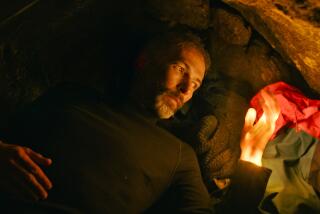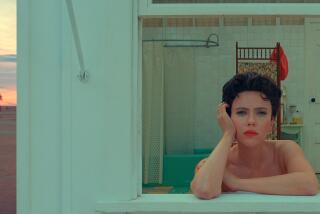Movie review: âAround a Small Mountainâ
Being a European filmmaker means never having to worry youâre too old to direct. Manoel De Oliveira is still active at 101, Alain Resnais just had âWild Grassâ released at 88, so why shouldnât Jacques Rivette, only 82 and like Resnais a French New Wave stalwart, have a new film as well?
One thing increased age has meant for Rivette is that his films are getting shorter. Instead of clocking in at the three, four and even four-plus hours that used to be the norm, âAround a Small Mountainâ lasts a mere 84 minutes, practically a hiccup in the directorâs world.
What hasnât changed for Rivette is his elusive sensibility, the feeling that anything in this film might simply evaporate if you looked at it too hard. Hard to classify or describe, âAround a Small Mountainâ is best thought of as an elaborate trifle that can be either beguiling or baffling depending on your point of view.
Even the filmâs original French title, â36 Vues du Pic Saint-Loup,â has a delicate, elusive quality, referencing both Hokusaiâs wood-block prints â36 Views of Mount Fujiâ and French artist Henri Riviereâs â36 Views of the Eiffel Tower.â Pic Saint-Loup, located in southern France, may be less impressive and less well known, Rivette appears to be saying, but it is still worthy of our attention.
Which is the same thing he is saying about the characters in his film, written by the director and a trio of collaborators: Pascal Bonitzer, Christine Laurent and Shirel Amitay. These creations are all gently wacky, complicit perhaps in some secret joke they are willing to let us share.
The film begins with Kate (Jane Birkin) standing beside her dead car within sight of the mountain. Around a curve comes a sports car that first passes her and then comes back. Out comes Vittorio (Italian actor Sergio Castellitto, like Birkin, a Rivette veteran), who fixes Kateâs car and takes off again, all without saying a word.
The two meet up again in a nearby small town, and this time talk is part of the equation. Kate is involved with a tiny traveling circus, a ragtag bunch of performers who play in a postage-stamp-sized ring.
On a whim as much as anything else, Vittorio attends that nightâs performance -- heâs practically the only one there -- and so falls in love with the troupeâs âGodotâ-like clown act that he interrupts his trip to follow the circus.
It turns out that Kate is only recently back with the group, a return set in motion by the death of her father, who ran the show. She and he had a terrible falling out 15 years earlier that everyone knows about but no one wants to explain to Vittorio.
Eventually that story gets told, but exactly what happened is not the point of the film. Instead, Rivette and company want us to think about the importance of not being a prisoner of the past, about how you can get to a place where you can understand and forgive yourself.
There is something quite theatrical about the way Rivette has conceptualized this film, and not just because many of its characters are performers. An empathy for Shakespeare is also part of the equation, and when Vittorio says âperformance is the most dangerous thing in the world, and itâs also the place where anything is possible,â he is doubtless expressing the directorâs thoughts as well.
More to Read
The biggest entertainment stories
Get our big stories about Hollywood, film, television, music, arts, culture and more right in your inbox as soon as they publish.
You may occasionally receive promotional content from the Los Angeles Times.











